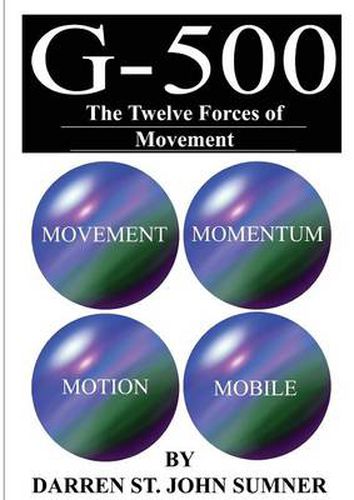Readings Newsletter
Become a Readings Member to make your shopping experience even easier.
Sign in or sign up for free!
You’re not far away from qualifying for FREE standard shipping within Australia
You’ve qualified for FREE standard shipping within Australia
The cart is loading…






This title is printed to order. This book may have been self-published. If so, we cannot guarantee the quality of the content. In the main most books will have gone through the editing process however some may not. We therefore suggest that you be aware of this before ordering this book. If in doubt check either the author or publisher’s details as we are unable to accept any returns unless they are faulty. Please contact us if you have any questions.
This to a published scientific article advertised on this website, known as G-500: The Twelve Forces of Movement.
It describes in detail through a series of pictures and diagrams, the importance of movement as a constant force in mechanics and dynamics, how movement uses momentum and motion to interact with bodies and objects, how they are formed into various shapes and patterns, and how they can become independent and mobile from movement.
The article utilises gas giants like worlds similar to the outer planets in our very own solar system (e.g Jupiter, Neptune) in elaborate illustrations to represent the bodies and objects at work, explaining the principles involved.
I have decided to use these types of planets in part to present the forces and reactions as an alternative to the typical and intimidating mathematical formulas and equations that are displayed in other such journals; the other reason is that gas giants are colourful metaphors to ease and entice the reader instead of the standard and sometimes common mono-coloured spheres, or basic symbols.
This is done so that all people even with a vague interest in science, physics, and similar fields can understand it in a lucid manner, without feeling alienated, perplexed, or overwhelmed. It is also done to show the importance and significance this field has.
On each page there are five planets; one is always labelled Movement and shown to be separate from the other planets that are pictured nearby. The others are labelled Momentum, Motion, and Mobile; this is to depict the reactions involved when Movement plays it role.
At the bottom of every page is a rectangular caption which describes in words what is happening in the above diagrams. This is to assist in the overall understanding of what I am addressing to the reader.
The documentation may appear rather simplistic, but this is part of a hopeful first step to a series of similar literatures that I plan to do in the future to bolster my theorems.
$9.00 standard shipping within Australia
FREE standard shipping within Australia for orders over $100.00
Express & International shipping calculated at checkout
This title is printed to order. This book may have been self-published. If so, we cannot guarantee the quality of the content. In the main most books will have gone through the editing process however some may not. We therefore suggest that you be aware of this before ordering this book. If in doubt check either the author or publisher’s details as we are unable to accept any returns unless they are faulty. Please contact us if you have any questions.
This to a published scientific article advertised on this website, known as G-500: The Twelve Forces of Movement.
It describes in detail through a series of pictures and diagrams, the importance of movement as a constant force in mechanics and dynamics, how movement uses momentum and motion to interact with bodies and objects, how they are formed into various shapes and patterns, and how they can become independent and mobile from movement.
The article utilises gas giants like worlds similar to the outer planets in our very own solar system (e.g Jupiter, Neptune) in elaborate illustrations to represent the bodies and objects at work, explaining the principles involved.
I have decided to use these types of planets in part to present the forces and reactions as an alternative to the typical and intimidating mathematical formulas and equations that are displayed in other such journals; the other reason is that gas giants are colourful metaphors to ease and entice the reader instead of the standard and sometimes common mono-coloured spheres, or basic symbols.
This is done so that all people even with a vague interest in science, physics, and similar fields can understand it in a lucid manner, without feeling alienated, perplexed, or overwhelmed. It is also done to show the importance and significance this field has.
On each page there are five planets; one is always labelled Movement and shown to be separate from the other planets that are pictured nearby. The others are labelled Momentum, Motion, and Mobile; this is to depict the reactions involved when Movement plays it role.
At the bottom of every page is a rectangular caption which describes in words what is happening in the above diagrams. This is to assist in the overall understanding of what I am addressing to the reader.
The documentation may appear rather simplistic, but this is part of a hopeful first step to a series of similar literatures that I plan to do in the future to bolster my theorems.